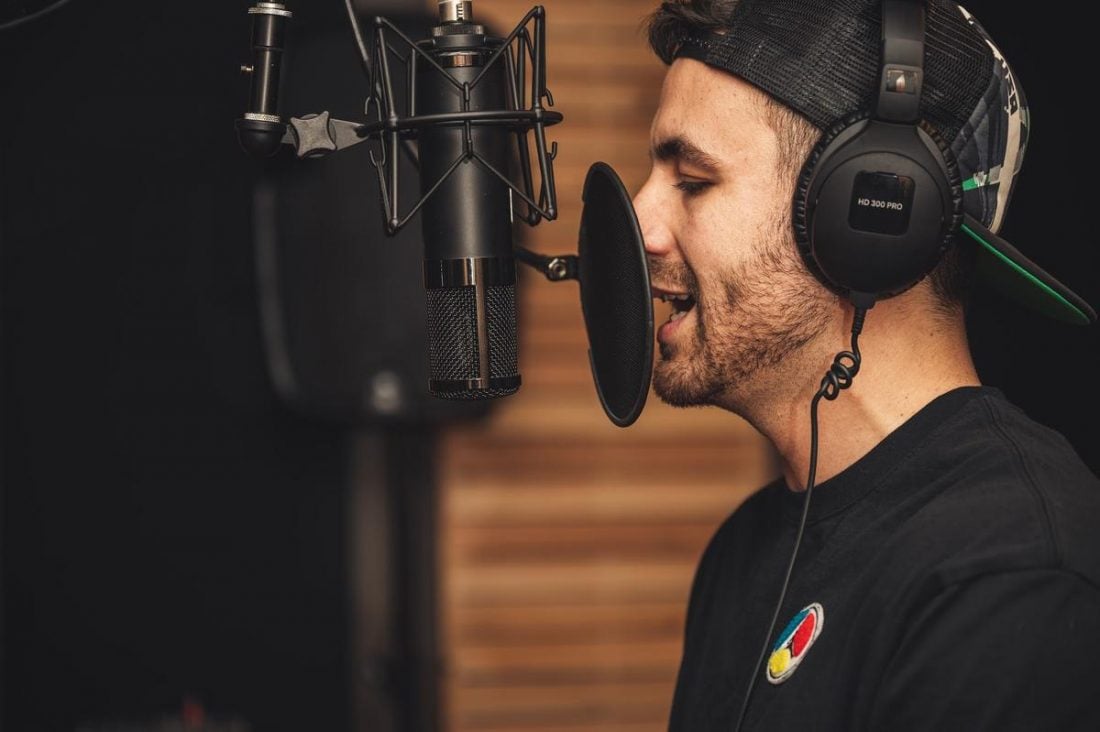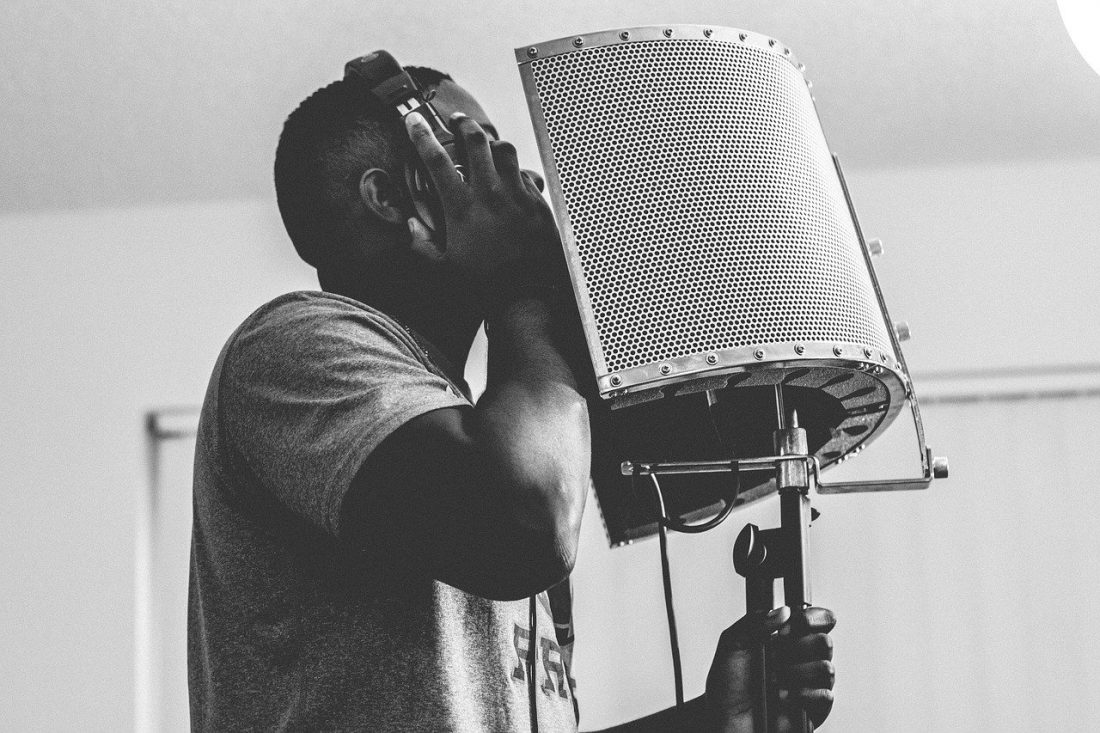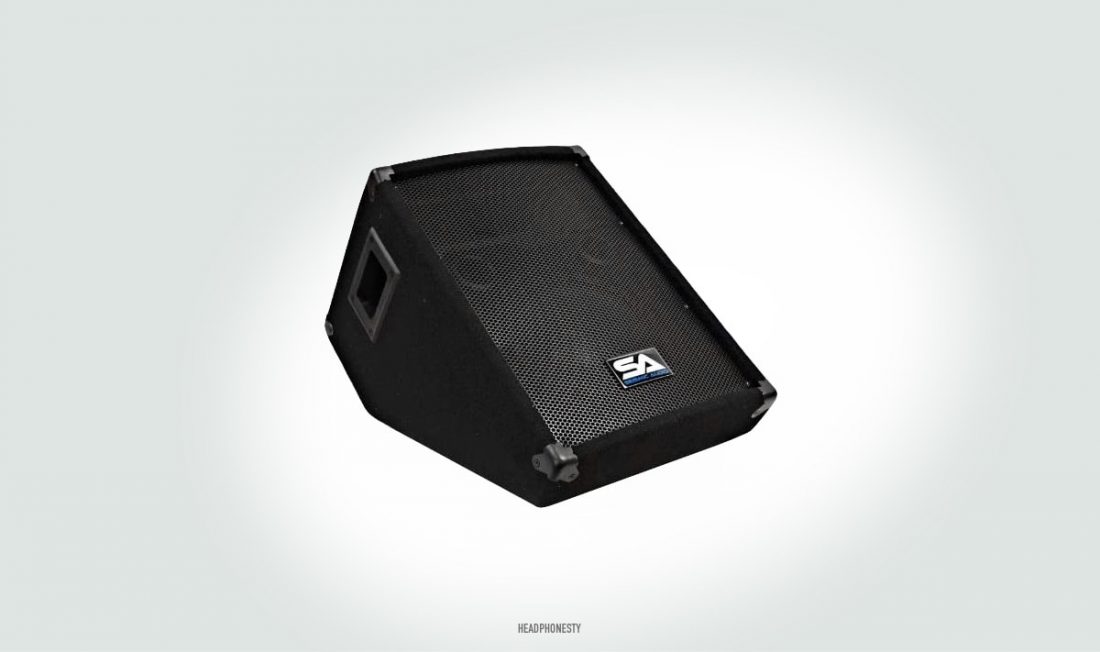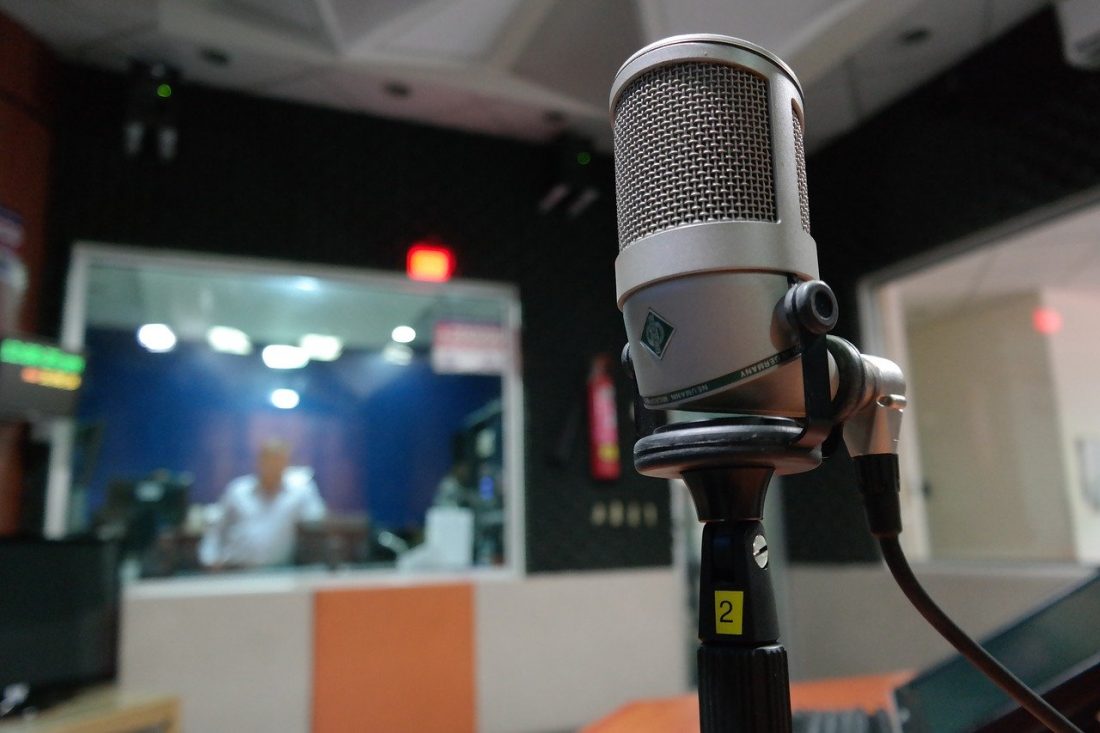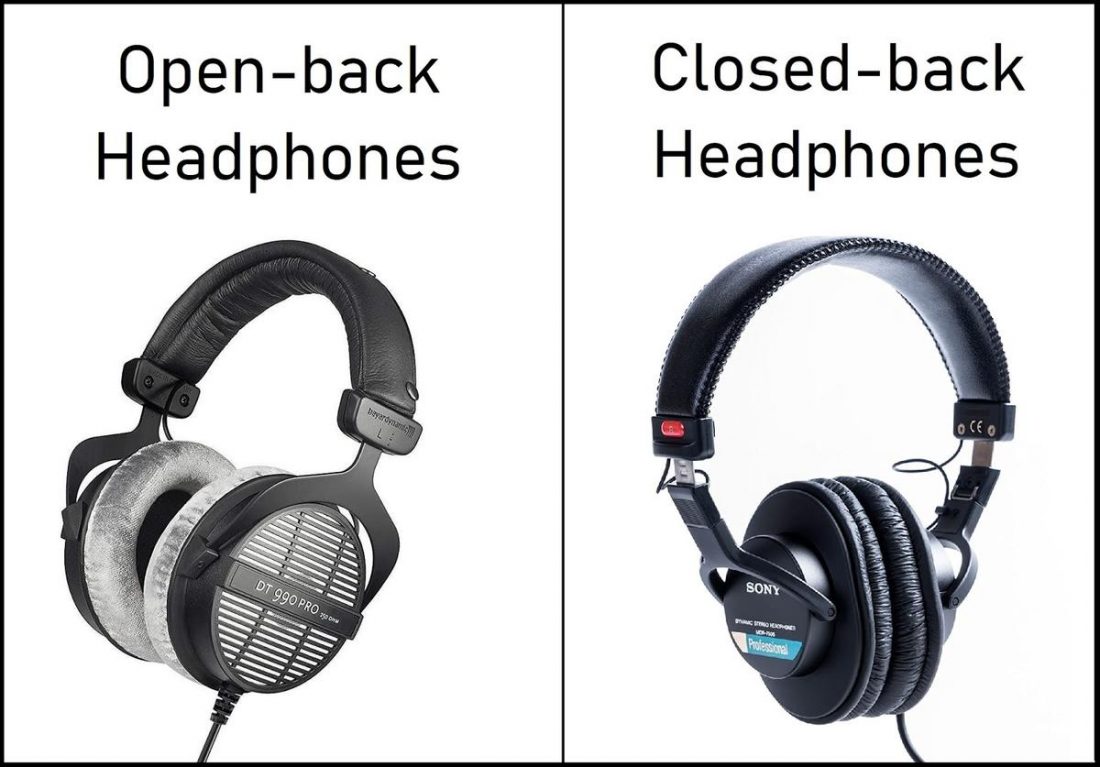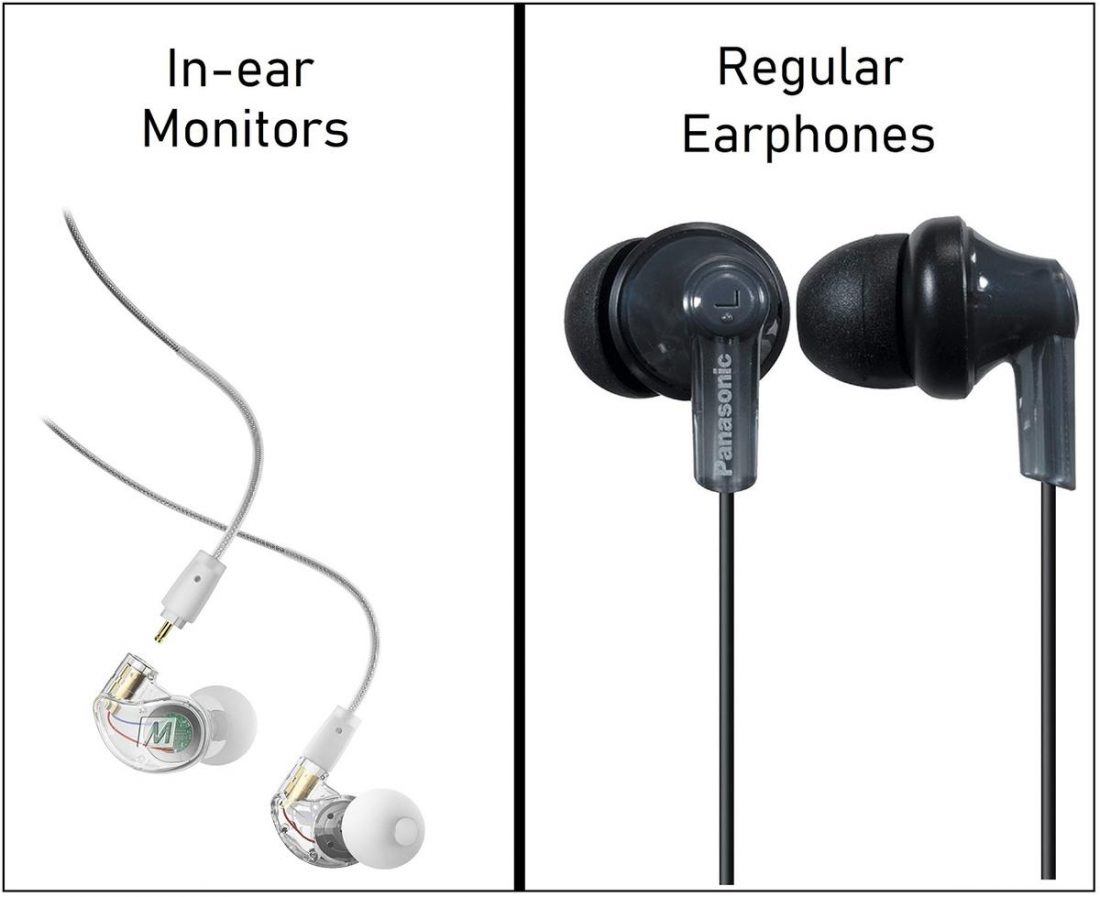Have you ever wondered why your favorite rapper wears headphones during his recording sessions? Or why your favorite music group wears earphones during their live performances? You may have some preconceived ideas on why they’re wearing headphones, but if you’re unsure of your guesses, you’ve come to the right place. In this article, we’re going to dive through all the specific details on why musicians wear headphones in recordings and live performances, and how it all works.
Why do musicians wear headphones when recording?
When you look at singers and vocalists recording in the studio, they’re almost always wearing a pair of headphones with a hand on their ear as they bob their head to the beat of the music. You might think that they do this only to look cool and stylish, but wearing headphones during recording sessions has a lot more to offer.
Keeping things clear
One reason why singers wear headphones when recording is because of the process of overdubbing — where they record individual parts separately, then layer them together until the entire track is complete. ‘Overdubbing’ on the parts that have already been recorded gives the rappers, singers, or musicians, freedom to make several takes or changes without having everyone else record their parts over and over again. Wearing headphones also helps keep each individual recording clear and free from any bleed. Bleed is when a mic that is intended for a particular instrument or voice picks up on other sounds during recording. This detrimentally affects the ability to separate vocals and instruments during the mixing process. Using headphones helps singers, rappers, and instrumentalists listen to pre-recorded tracks while recording their parts, without any bleeding.
Separating Instruments in Multi-track recordings
During the age of primitive recording technology, most bands and performers would usually group up around a few mics in one room and perform their entire track in one go, usually with the help of monitor speakers and instrument amplifiers. This made it hard to make any impactful EQ changes when mixing, as one minor change would affect how all the instruments and voices sounded as well. However, thanks to the advancements in recording technology as well as the practice of multitrack recording, artists and sound engineers can now record each instrument and voice on its own for individual processing. This technique allows groups of musicians to hear themselves while recording at the same time by plugging their instruments to an interface, mixer, or headphone amplified, instead of using monitor speakers or instrument amplifiers. This produces separate recorded tracks that are free to be edited/mixed individually, before coming together as a whole.
Timing
Another important aspect to keep in mind when recording is the timing. That’s why musicians wear headphones in order to hear a click track so that everyone involved stays within the beat. A click track is basically a metronome-like beat that serves as audio cues, which helps vocalists and mucisians synchronize their performances and stay in meter.
Why do musicians wear headphones when performing live?
For musicians and singers alike, wearing headphones during live performances is just as important as wearing them during recording sessions. That’s why if you’ve ever attended a concert or live performance of your favorite band or artists, you might have noticed that they sometimes wear earphones, or more specifically, in-ear monitors (IEMs).
Stage Monitoring
In general, two things need to happen in order to have a successful live musical performance: Musicians need to hear themselves to make sure that they sound right and are all performing in rhythm. That’s why the only way to fulfill the 2nd requirement is to implement a stage monitoring system using the most appropriate devices. Traditionally, most musicians and singers would use floor monitor speakers or floor wedges as their primary monitoring system. However, nowadays, more artists shift to using in-ear monitors instead of floor wedges because of several advantages that IEMs have over the traditional methods of floor monitoring systems. Here are some of them:
Sound Isolation
IEMs provide singers with great sound quality on their personal mixes together with the benefits of blocking unnecessary outside noise. Because these devices are designed to be worn inside the ear canal, it creates a reliable seal that effectively reduces noise levels while allowing the musician to perform without distractions. On the other hand, stage speaker monitors or floor wedges can create problems for both the performers and the audience. These wedges can interfere with the sound system meant for the audience as well as create acoustic problems that prevent the musicians from hearing themselves properly, thus adversely affecting the performance of the entire band.
Optimal Volume Levels
Another benefit of using IEMs is the ability to control the in-ear music volume while reducing the overall stage-volume. Because of their noise-cancelling feature, musicians can listen to their tracks clearly and at their preferred volume levels. Not only does this help them feel comfortable during their performance, it also helps preserve their hearing in the long run. Some musicians also need to hear specific instruments louder than others. For example, bassists need to hear the drums better in order to follow the rhythm while vocalists usually need to hear their own voice to ensure that they’re not going off tone. By using in-ear monitors, these musicians can fully personalize their mix and hear exactly what they want. This is where on-stage monitoring systems are at a disadvantage, since they need to blast music at the loudest volumes in order for the musicians to hear themselves. The constant exposure to loud volumes of music can cause hearing problems and ear damage to the performers in the long-term.
Elimination of Feedback
By directly putting the sound and music into the musician’s ear through the use of IEMs, feedback is essentially eliminated. When using floor wedges, there is a possibility that the amplified music coming from a loudspeaker is picked up by the microphones intended for the singers/performers. This usually happens when the microphones and monitor speakers are too close together or when the mics are turned up.
Mobility
Freedom of movement and mobility is another benefit of using IEMs because you don’t need to stay in a single spot to hear the full range of music. Wearing IEMs allows you to bring the sound wherever you go, thus freeing up your movement while also providing you with more space to work with on stage. The use of stage monitoring systems also restricts movement by requiring musicians to stay at a certain “sweet spot” in order to properly hear the music. On top of that, the floor wedges and loudspeakers take up valuable stage space as well.
Musical Direction
Sometimes, it also helps the musicians if they’re specifically given audio cues and transitional music directions from a musical director in order to have better synchronization and overall performance.
How do in-ear monitors work?
In-ear monitors are basically made up of three important components:
Transmitter – Transmits the audio or the music of the performance (monitor mix) to the receiver. Receiver – Receives the transmitted audio and is connected to the earphones. It’s usually worn as a belt pack and has volume control knobs for the musician to adjust the sound level. Earphones – Serves as a way to cancel out unwanted noise from entering the ear while also directly transmitting the monitor mix to the musicians in high quality.
Studio Headphones vs. In-Ear Monitors vs. Regular Headphones
If you’re an aspiring artist or singer, you may ask yourself: The short answer is no, not really. Here are some reasons why professional musicians and artists always opt for quality studio headphones and in-ear monitors for their performances.
Sound Response
Studio headphones and in-ear monitors have flat frequency response, meaning the audio or music playing from them has no bass boost or any other changes to the different frequencies of the track. This allows sound engineers and mixers to pick up on any inconsistencies/mistakes in the song and make the necessary fixes. Regular headphones on the other hand, usually fall within a certain frequency range, have a limited frequency range, and boost bass or higher frequencies or both. This makes them unable to detect the unwanted sound artifacts found in recordings.
Sound Isolation
Although there are some regular headphones that offer sound isolation, professional studio headphones and IEMs are more reliable in providing this. Music studios are generally noisy places, especially when recording sessions are underway. That’s why it’s important for musicians to wear quality studio headphones that provide the right amount of sound isolation in order to record and perform their song with no distractions.
Durability and Comfort
This is where studio headphones and regular headphones share some similarities since they have the opportunity to provide both. You basically want headphones that are high quality and durable enough so that it can last for several years of constant use, while also providing the comfort you need to be able to wear them for hours on end. Most top end (and expensive) studio headphones usually last a lot longer than standard headphones due to their sturdy materials and quality construction.
Type and Design
The type and design of headphones you would want highly depends on your personal preference. However, when choosing studio or regular headphones, there are two general types to choose from: open-back and closed-back. Open-back headphones usually have perforations or grills on each ear cup in order to allow air and sound to pass through. This creates a different listening experience where the bleeding background noise allows for a more ambient and spacious feel. On the other hand, closed-back headphones are the best at isolating noise. This isn’t done through active noise cancellation technology, but through its physical structure and how its sound-insulating ear cups create a reliable seal around your ears. As for IEMs, they are often compared to regular earbuds. However, these devices differ from each other in terms of style, design, and overall functionality. When it comes to picking a device that suits your aesthetic appeal, both earbuds and IEMs have a lot of designs for you to choose from in the market. However, if you want a truly personal device, you can get customized in-ear monitors (CIEMs) that use a customized mold of your ear canal in order for the device to fit perfectly. IEMs and CIEMs also have superior sound quality in comparison to regular earphones because they have multiple headphone drivers. Most of the high quality IEMs/CIEMs can have up to eight headphone drivers in one earpiece. Multiple headphone drivers allows the in-ear monitors to have a full range of frequencies, which results in distinct sound clarity and low distortion.
The Disadvantages
Although using studio headphones and in-ear monitors sounds like the only possible option, they still have a few disadvantages that you should take note of.
The Price
Because studio headphones and IEMs offer more features that are essential to recording music and live performances, they tend to cost a lot more than regular headphones.
Takes some “vibe” away
Every musician loves to take in all the cheers and shouts of their adoring fans during any live performance. However, due to the effective sound isolation of IEMs, it’s hard for singers to appreciate the “vibe” of hearing the crowd.
Audio Malfunction
Although the chances of audio malfunctions are slim, they do happen sometimes. Whether the audio cuts out, the monitor mix is too loud, or any other problem, these issues can definitely wreck a performance when they happen.
Conclusion
The importance of a good pair of studio headphones or IEMs goes a long way in a musician’s career. Whether it’s recording their latest album in the music studio, or having their live performance in front of thousands of fans, wearing a good pair of headphones/IEMs is essential in those scenarios. Through the detailed explanations in this article, you should now know why musicians wear headphones during recording sessions and live performances. Do you have any other questions regarding this topic? Feel free to let us know in the comments down below!
